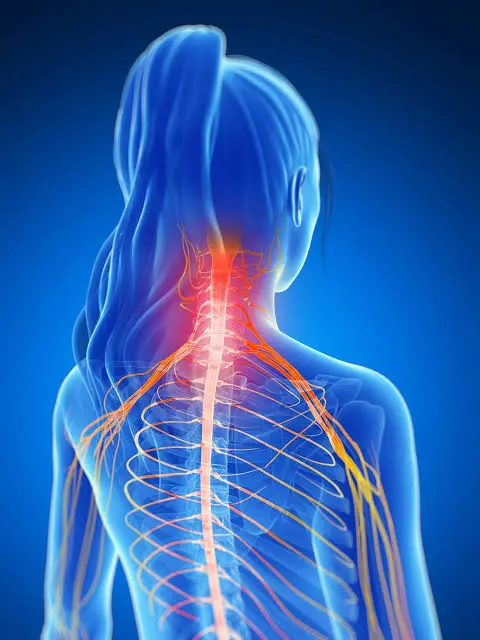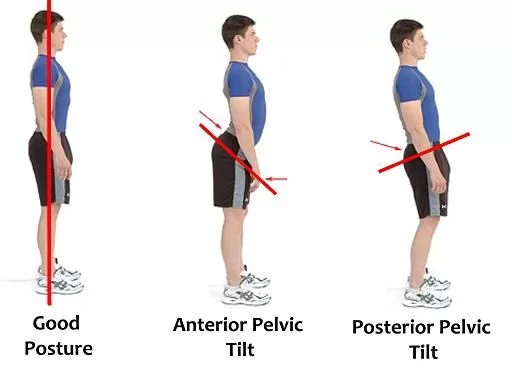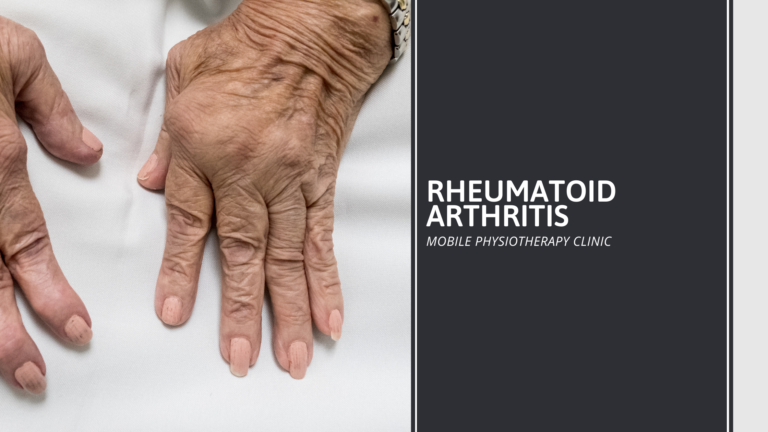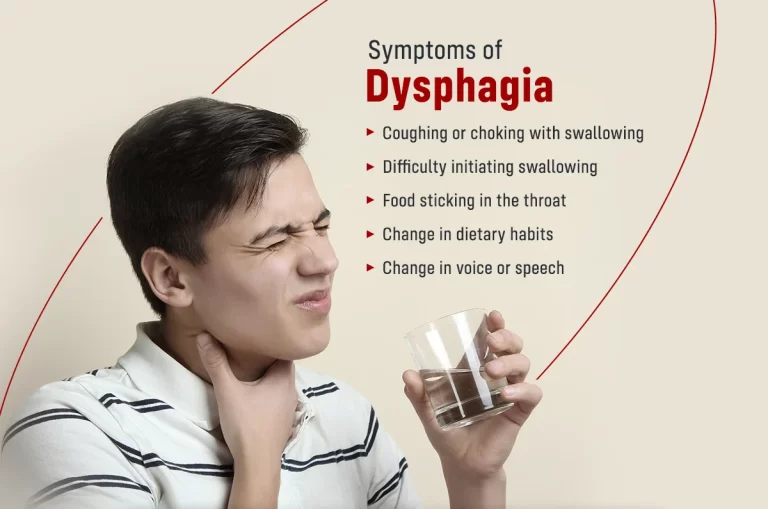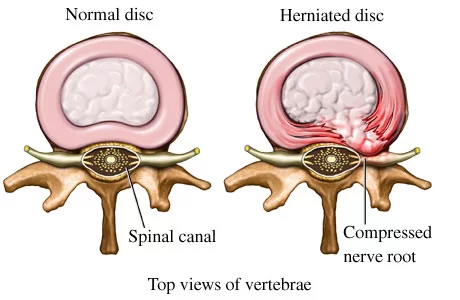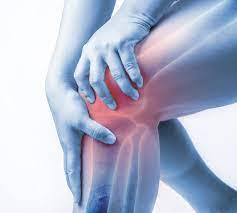Shoulder Pain with Neck Pain
Table of Contents
Introduction
Shoulder pain and neck pain are common complaints that can significantly impact one’s daily life and overall well-being.
When shoulder and neck pain coexist, it usually results from an accident, but it can also happen when certain medical conditions, such as a heart attack, are present. Treatment can depend on the cause.
A frequent ailment that has numerous potential causes is neck pain. Most people will have experienced it at some time in their life.
Your neck and shoulders are made up of several ligaments and other supporting components, in addition to muscles, bones, nerves, arteries, and veins. Pain in the neck and shoulders can be caused by a variety of disorders. A heart attack or other serious injuries are examples of conditions that can be fatal, but minor aches or contusions are not as serious.
While most cases of neck pain resolve in a few days or weeks, pain that lasts for months may indicate an underlying medical condition that requires attention. For the greatest outcomes, early intervention could be required in some situations.
It is common to experience both shoulder and neck pain at the same time, which is typically caused by a sprain or strain.
A few examples of pain that can vary in intensity from mild to extreme are:
- tingling
- shooting pain
- stiffness
- numbness
- spasms
- soreness
Pain in the neck and shoulders may occasionally indicate a heart attack or stroke. These are severe medical situations that call for prompt assistance.
What is neck pain?
Pain in the neck is a frequent ailment that has numerous causes. Most people will have experienced it at some time in their life.
The majority of neck pain goes away on its own in a few days. Rarely it’s an indication of something more serious.
Rarely, some malignancies and gallstones may be the cause.
What is Shoulder Pain?
All pain around or around the shoulder joint is considered to be shoulder pain. The rotator cuff is made up of four muscular tendons that attach to the shoulder. These four tendons work together to stabilize the upper arm bone in the shoulder socket and provide a large range of motion.
Causes of Neck and Shoulder Pain
The most frequent reason for shoulder and neck pain is a soft tissue injury, which includes damage to the muscles, tendons, and ligaments that make up these structures.
- Whiplash or similar damage to these regions may cause this.
- Degenerative arthritis: Shoulder and neck pain may result from pinched nerves caused by degenerative arthritis of the cervical spine.
- Cervical radiculopathy, a condition caused by disc herniation and degenerative disc degeneration in the neck, can cause localized neck pain or radiating pain that presses on nearby nerves.
- Pain in the neck and shoulders can also result from abnormalities affecting the heart, lungs, spinal cord, and some abdominal organs.
Here are some examples:
- Broken collarbone: Your collarbone may fracture if you fall on your outstretched arm. This is especially frequent among cyclists who fall off their bikes.
- Bursitis: A bursa is a sac that covers joints to act as a cushion between muscles and joints. After an injury, these bursae may swell, stiffen, and hurt.
- Heart attacks: Although the heart is the source of the problem, “referred” pain, or shoulder or neck pain, can also result from heart attacks.
- Broken shoulder blade: Hand, wrist, or ankle trauma is typically linked to shoulder blade injuries.
- Rotator cuff injuries: The tendons that support the shoulder are called rotator cuffs. These tendons may sustain damage from lifting during activities involving a lot of throwing or from prolonged, repetitive use. Shoulder impingement syndrome may result from this, causing pain when the shoulder moves and, in the end, a permanent loss of shoulder range of motion (frozen shoulder).
- Shoulder separation, or A-C separation: Ligaments bind the clavicle, or collarbone, to the scapula, or shoulder blade. Shoulder trauma can cause these ligaments to become strained or torn.
- Whiplash injury: Sudden acceleration or deceleration, such as in a car collision, can injure the ligamentous and muscular structures of the neck and shoulder. Additionally, this may result in shoulder and neck spasms.
- Tendonitis: Ligaments that attach muscles to bones are called tendons. Tendons can swell and hurt when they are strained. Another name for this is tendinitis.
- Gallbladder disease: The right shoulder may experience pain related to gallbladder disease.
Referred pain in the shoulder can also result from any source of inflammation under the diaphragm.
Activities involving hard lifting and tossing, transporting heavy luggage or other objects, ageing, and sports are risk factors for shoulder and neck pain.
Some people have shoulder discomfort; others only have neck pain; and others have both.
Common causes of neck pain include:
- Abnormalities in the bone or joints
- Trauma
- Poor posture
- Degenerative diseases
- Tumors
- Muscle strain
Soft tissue injuries
Soft tissue injuries are frequently the cause of neck and shoulder pain. Your ligaments, tendons, and muscles are examples of soft tissue. The phrase is used to set it apart from cartilage and the hard tissue of bones.
Pain from soft tissue injuries can take many different forms, such as:
- stiffness
- headache
- muscle spasms
Rotator cuff tear
Four tendons called the rotator cuff attach your upper arm, or humerus, to your shoulder blade.
One-time trauma, like a fall, or prolonged, repetitive stress, such as playing sports involving a lot of arm and shoulder movement, can result in a rotator cuff tear.
Ageing can also contribute to rotator cuff tears. Reduced blood flow might hinder the body’s natural capacity to mend damage. Moreover, bone spurs in the joint may develop and harm the rotator cuff tendons.
Usually, a sudden tear would result in severe shoulder pain and acute upper arm weakness.
Over time, arm weakness and shoulder pain may result from tears brought on by repeated use. Pain can develop when doing tasks that involve reaching up or behind, such as combing your hair.
Whiplash
The tearing of your neck’s muscles, tendons, and ligaments as a result of an abrupt movement is known as whiplash. Usually, it happens in a car accident.
Other common causes include:
- contact sports
- being shaken
- falls
- a blow to the head
It may take up to 24 hours for the symptoms to manifest. These symptoms include:
- neck pain and stiffness
- headaches
- dizziness
- blurred vision
- constant tiredness
- The majority of patients recover completely in three months, although some may experience headaches and persistent discomfort for years thereafter
Cervical spondylosis (cervical osteoarthritis)
The term for age-related degeneration of your neck’s spinal discs is cervical spondylosis. It’s a very common condition, affecting more than 85 percent of people over the age of 60.
Bony parts called vertebrae make up your spine. There are cushions of soft material called discs between each vertebra.
Bony parts called vertebrae make up your spine. There are cushions of soft material called discs between each vertebra. Your vertebrae move closer together. Cervical osteoarthritis is a condition where this can irritate the joint lining.
Bone spurs are another complication of arthritis.
Cervical osteoarthritis is characterized by stiffness and pain in the neck. In more extreme situations, a pinched nerve may result.
A pinched nerve (cervical radiculopathy)
Pain that travels to your shoulder may be caused by a pinched nerve in your neck.
This is also known as cervical radiculopathy.
The most common cause of cervical radiculopathy is degenerative or trauma-related alterations to the spine.
The nerves that pass through the empty spaces between the vertebrae may become pinched as a result of bone spurs. A pinched nerve may result if this occurs in your neck.
Symptoms include:
- Your hand or fingers may be tingling or numb.
- weakness in the muscles of your arm, shoulder, or hand
Herniated disc
Vertebrae get closer together when cervical discs shrink, which can occasionally cause damage to one or more of the discs.
A disc is referred to as slid, herniated, or prolapsed if its softer inside shows through its tougher outer layer.
The following are signs of a slipped or herniated disc:
- pain
- numbness
- tingling
- aching
- a burning sensation in your neck
Posture and sleeping position
The muscles and tendons in your neck and shoulders may get strained if you hold your neck in an uncomfortable posture for an extended period of time.
The following are a few positions and activities that frequently cause shoulder and neck pain:
- Sleeping with a pile of pillows or a pillow too high
- Grinding or clenching your teeth at night
- Sitting over a phone or computer while tilting your head forward or upward
- Suddenly jerking your neck during exercise
Stable angina
Stable angina can also cause pain in the jaw, neck, shoulders, or back. It happens when the coronary arteries narrow and the heart isn’t getting enough oxygen.
Typically, the discomfort starts in the middle of the chest and radiates to the left arm, shoulders, neck, back, and jaw.
It should be diagnosed and treated promptly.
Stroke or cervical artery dissection
Cervical artery dissection is a dangerous type of stroke that can cause neck pain. Although uncommon, this illness is among the leading causes of stroke in individuals under 50.
Symptoms of a stroke include:
- Drooping of the face
- Arm numbness or weakness
- Difficulty speaking or slurred speech
- Vision trouble
- Difficulty walking
Broken collarbone (clavicle)
The slightly curved bone at the top of your chest that connects your shoulder blades to your rib cage is called the collarbone, or clavicle.
When you fall on your outstretched arm, you frequently suffer a clavicle fracture.
Signs of a broken clavicle include:
- Intense pain
- An inability to lift your arm
- A sagging shoulder
- Bruising, swelling, and tenderness
Broken shoulder blade (scapula)
The big, triangular bone that joins your upper arm to your collarbone is called the shoulder blade, or scapula.
High-impact injuries like motorcycle or car crashes can result in scapula fractures.
Severe pain with arm movement and swelling behind the shoulder blade are among the symptoms.
Symptoms of Shoulder and Neck Pain
- Pain: Pain can cause a range of motion reduction and stiffness in the shoulder and neck. There may be a headache. Your physician will want to know the specifics of each symptom because they may have information about what is causing your discomfort.
- Weakness: Severe discomfort from moving muscles or bones may cause weakness. On the other hand, damage to the nerves supplying the muscles is also possible. It’s critical to differentiate between actual weakness—damage to the muscles or nerves—and incapacity or unwillingness to move due to discomfort or inflammation.
- Numbness: Your ability to feel things normally may be impaired if your nerves are pinched, bruised, or sliced. This could result in a tingling or burning sensation, a loss of feeling, or a changed feeling that feels like your arm is “falling asleep.”
- Coolness: A cool arm or hand may indicate damage or blockage to the veins, arteries, or both. This could indicate that the arm is not receiving enough blood.
- Colour changes: Another indication that there may have been damage to the arteries or veins is a blue or white hue to the skin on your arm or shoulder. Redness may be a sign of inflammation or illness. Rashes could also be observed. There can be visible bruises.
- Swelling: This could affect the entire arm or just the tissues that are impacted (such as a bursa that is irritated or a fractured region). Tightness or spasms in the muscles might mimic real oedema. A depressed area or, ironically, a bloated look might result from dislocation or deformity.
- Deformity: If you have a fracture or a dislocation, you may have a deformity. Bony structures may be positioned abnormally as a result of specific ligament tears.
Diagnosis
- X-rays: X-rays can help diagnose neck and shoulder pain. Plain X-rays can reveal disc space narrowing, rheumatologic disease, arthritis-like diseases, tumours, slipped discs, narrowing of the spinal canal, fractures, and instability of the spinal column, destructive lesions, slippage, stenosis, fractures, and instability with flexion-extension views.
- MRI: Magnetic resonance imaging (MRI) is a non-invasive procedure that can reveal the details of neural (nerve-related) elements as well as problems with the tendons and ligaments.
- Myelography, or CT scanning, is sometimes used as an alternative to MRI.
- Electrodiagnostic studies: Nerve conduction velocity (NCV) and electromyography (EMG) may also be used to help diagnose arm, shoulder, and neck discomfort, tingling, and numbness.
Treatment of Shoulder Pain with Neck Pain
The treatment of soft tissue neck and shoulder pain often includes the use of anti-inflammatory medications such as ibuprofen (Advil or Motrin) or naproxen (Aleve or Naprosyn). It could also be advised to take painkillers like acetaminophen (Tylenol).
Certain medications, such as muscle relaxants and even antidepressants, may be beneficial, depending on the cause of the pain. Your therapist can prescribe an exercise program for you to follow at home. For shoulder arthritis, local corticosteroid injections are frequently beneficial. For both neck and shoulder pain movements, exercises may help. In cases in which nerve roots or the spinal cord are involved, surgical procedures may be necessary. Your doctor can tell you which course of treatment is best for you.
The underlying cause of shoulder and neck discomfort determines how to treat it.
Emergency care is frequently provided for catastrophic diseases, including heart attacks and strokes. Massage, physical therapy, and home remedies will help with most other cases.
Some of the more serious situations that may require surgical treatment include the following:
Fractures
The first line of therapy for fractures of the collarbone or shoulder blade is arm slings, which hold your arm and shoulder in place while the injury heals.
If surgery is necessary, the general process involves reassembling the fractured ends of the bone and securing them in place to keep them from moving while they heal.
This may entail using anaesthetics to place plates and screws.
Rotator cuff tear
Of those with rotator cuff tears, roughly 80% respond well to nonsurgical therapies. If you have significant weakness in your shoulder and your symptoms have lasted 6 to 12 months, your doctor may suggest surgery.
Reattaching the damaged tendons to your upper arm bone is typically the goal of surgery for a torn rotator cuff.
Some simple home remedies will help ease the ache if your shoulder and neck are bothering you. Consult a physician or certified physical therapist if your symptoms are more severe.
- Take a vacation from sports and other activities that could cause discomfort in the area.
- After your pain begins, apply an ice pack to the affected area for the first three days. Use the ice pack five times a day for up to twenty minutes after wrapping it in a towel.
- This will help reduce swelling.
- Take OTC pain relievers.
- Gently massage the neck and shoulder area.
Natural solutions might assist in easing the ache if your shoulder and neck are bothering you. If your symptoms worsen, consult a physician.
Physical Therapy Treatment
A physical therapist can treat your muscles and soft tissues to relieve discomfort; your doctor might also recommend one to you. Your therapist can prescribe an exercise program for you to follow at home. By doing this, you may strengthen your shoulders and neck and avoid further injuries.
Physical therapy comes in two main forms:
Passive physical therapy: Physical therapy that requires no effort on the part of the patient is called passive therapy. There are many different treatment options, including the use of cold packs, heat therapy, massage therapy, ultrasound, electrotherapy, and more. Helping to minimize discomfort and swelling is the aim of passive physical therapy.
Active physical therapy: This entails the patient performing stretches and exercises on their own body. Enhancing the neck’s strength and flexibility may help these muscles become less sore and more adept at maintaining proper posture, which lessens the strain on the cervical spine.
Physical therapy for neck discomfort may begin with more passive treatments, but over time, more and more aggressive therapies will probably be added.
- Cold and heat therapy: Apply ice and a heat pack to the painful area. Place it for 10 minutes.
- Electrotherapy: TENS and IFT for pain relief
- Ultrasound for swelling
- Manual therapy includes a myofascial release for tightness and mobilization of the cervical spine and shoulder to increase the range of motion.
- Stretching and strengthening exercises.
Neck Exercises:
The mainstay of a physiotherapist’s treatment plan for neck pain is neck exercise. Maintaining a proper range of motion in the neck is the goal of these exercises.
The best course of action is to continue with gentle neck exercises once the acute pain has faded. Increasing the range of motion and exercise is another important step. You must perform the following workouts in addition to carrying on as much as possible with your regular routines.
Here is a summary of some of the best physiotherapy methods for treating neck discomfort.
Flexing of the Neck
To do this movement, the head must be brought forward until the chin touches the chest and the face is stared down on the ground. The optimum outcome is to repeat five times slowly.
Neck Extension
To complete this exercise, you must allow your head to move back until your face is facing the ceiling.
Rotation:
Turn your head slowly to one side until it is no longer able to move freely. After doing five repetitions to one side, move on to the other. Take care not to rotate your head or oscillate while performing the separate movements.
Side Bends
Try to tuck your ear down toward the same shoulder while maintaining a straight head. Perform this exercise slowly and with gentle motions, just going as far as it is comfortable for you to go.
Other Movements:
Other motions that could be beneficial are as follows:
Shoulder shrugs
Raise your shoulders as high as you are comfortable with. When finished, extend below the standard time.
Shoulder bracing (retraction)
You must bring your shoulders forward in this action, as if you’re trying to pull them together in the middle. After finishing, draw your shoulder blades together and brace them straight back. Make these movements large, slow, and repetitive.
Stretching:
Neck stretches
Three or four circuits of the following stretches should be performed at a time:
- Sit in a relaxed position.
- For a duration of five to ten seconds, tilt your head forward until your chin touches your chest.
- Slowly turn your head back so that you are staring at the ceiling.
- Hold 5 to 10 seconds.
- As if you were directing your ear at your shoulder, tilt your head to the right. Hold the position for five to ten seconds while maintaining a relaxed shoulder.
- Repeat the motion on the left side.
- As though you’re gazing over your shoulder, slowly turn your head to the right. For five to ten seconds, keep your head there. Repeat motion on other side.
Levator scapula stretch
Your neck’s levator scapula muscle is situated on both sides, at the back and side. The scapula bone, which joins your collarbone to the upper arm, is raised by it.
To stretch:
- Place your hands on the door frame and stand in a doorway with both arms bent at the elbow at a straight angle.
- Until you feel a slight stretch beneath your collarbone, bend forward.
Shoulder stretch:
- Position yourself in a doorway, placing your hands on the door frame and bending both arms at the elbow at a straight angle.
- Until you feel a slight stretch beneath your collarbone, bend forward.
- Hold for 5 to 10 seconds.
Home Remedy of Shoulder Pain with Neck Pain
A few preventative strategies and pointers to try at home are as follows:
- Take a vacation from sports and other activities that could cause discomfort in the area.
- For the first three days following the onset of pain, apply an ice pack to the affected area. Use the ice pack five times a day for up to twenty minutes after wrapping it in a towel.
- This will help reduce swelling.
- Apply heat using a heating pad or warm compress.
- Take OTC pain relievers.
- To lessen soreness and swelling, wrap your shoulders with an analgesic. Check them out online.
- Gently massage the neck and shoulder area.
- Use an OTC pain-relieving topical cream.
Prevention
The key to treating neck and shoulder discomfort is prevention. When it comes to making lifestyle change recommendations, pharmacists can be quite helpful. When sitting or standing, patients should maintain proper posture so that their shoulders are squared over their hips and their ears are squared above their shoulders.
Encourage individuals to take frequent breaks to stretch their necks and shoulders, especially for those travelling long distances or those who spend a good part of the day at a computer. Smoking can increase the risk of developing neck pain, so smoking cessation counselling is important.
Additionally, since it raises the risk of neck and shoulder pain, patients should refrain from tucking their phones between their ears and shoulders. Instead, please encourage them to use a headset or speakerphone. Patients should be advised not to lift large, heavy bags since this might potentially strain their necks.
Maintaining proper alignment of the head and neck with the body while sleeping necessitates sleeping in a comfortable position, such as by placing a small pillow beneath the neck.
These are all potential preventative measures for shoulder and neck pain.
Complications
The following are possible reasons for arm and neck pain:
- Ageing
- Accidents
- Simple daily strain
- Injury to the neck or head
- Prolonged neck problems
- Nerve discomfort in the neck and arm numbness and weakness might result from issues with the cervical spine, or the part of the spine in your neck.
- Whiplash injuries
The following are some more complex reasons for arm and neck pain:
Herniated and bulging disc:
Wearing a disc can cause the outer layer to rupture, creating a hernia.
Inducing pain, numbness, and weakness, the herniated disc may press on the spinal canal and nerve roots.
Like a herniated disc, a bulging disc can also put pressure on a nerve, but it does not burst.
Bone spurs:
Bone spurs, which are bony deformities that can push on discs and irritate nerves, can be brought on by wear and tear on the spine.
Discs may become flattened, dehydrated, and deteriorate as a result of strain from bone spurring.
Cervical spinal stenosis (Aka “pinched nerve)
A constriction of the spinal column or foramen brought on by disc protrusions or bone spurs is known as cervical spinal stenosis.
The term “pinched nerve” is occasionally used to describe it.
Foraminal stenosis can pinch the nerve roots that leave through the foramen, while central stenosis can pinch the spinal cord.
This pinching can cause back, shoulder, and arm pain. Additionally, it may result in hand and arm weakness and numbness.
Summary
Pain in the neck and shoulders can have various reasons. This is the reason why determining the cause can be difficult for doctors.
To determine what causes neck and shoulder pain, medical practitioners must make a comprehensive diagnosis. They can recommend a course of treatment if they identify the underlying problem.
While ageing is a factor in certain cases of neck and shoulder pain, injuries or repeated work responsibilities can also be contributing factors in others.
Shoulder and neck pain can occasionally be a sign of a more serious illness like angina or a heart attack.
Seeking emergency medical assistance is advised for anyone experiencing sudden, unexplained neck and shoulder pain.
FAQs
In rare cases, neck pain may indicate a more serious issue. Seek medical attention if your neck pain radiates down your arm or shoulder, causes numbness or weakness in your hands or arms, or both.
A cervical nerve that is constricted or inflamed where it splits off from the spinal cord is known as a “pinched nerve” or cervical radiculopathy. In addition to muscle weakness and numbness that travel down the arm and into the hand, this may result in discomfort that radiates into the shoulder.
If you have neck pain, get emergency medical attention. arises following an incident. involves losing control over one’s bladder or bowels. remains constant whether you move or remain static.
Over the course of their lives, over half of all people will encounter a clinically significant episode of neck discomfort. Women experience more DALYs from neck pain than men do, with the biggest number occurring in the 40–45 age range.
Long-term stress can cause our body to retain tension in the muscles of our shoulders and necks, which can cause pain. One common indication of ongoing stress is neck ache. Our muscles contract up when we are under stress, which intensifies the pain and suffering. Additionally, tension headaches could occur.

